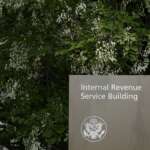Here’s why retirees should consider adding Vanguard ETFs to their portfolio.
With more than $7 trillion in client funds under management, investment giant Vanguard is a force to be reckoned with. Unlike some deep-pocketed hedge funds or exclusive Wall Street firms, it’s important to remember that this asset manager got to where it is with a very populist approach to investing — namely, low-cost index funds that help regular folks grow their retirement funds in the long term. If you’re currently in or approaching retirement, Vanguard’s family of exchange-traded funds has a lot to offer you in both preserving your hard-earned savings and ensuring this cash continues to grow. Here are eight Vanguard ETFs that retirees should consider for their portfolio.
Vanguard Total Stock Market ETF (ticker: VTI)
The big dog in Vanguard’s kennel of ETFs, this total stock market fund boasts $250 billion in assets under management to make it one of the most dominant funds of any kind on Wall Street. And with around 3,700 U.S. companies making up the portfolio — from technology giant Apple (AAPL) to megabank JPMorgan Chase & Co. (JPM) — it does exactly what the name implies by giving investors exposure to nearly the entirety of the stock market. To top it off, the fund has a rock-bottom fee structure with an annual expense ratio of just 0.03%, or $3 per year on every $10,000 invested. If you’re looking for a simple and easy way to invest in U.S. stocks, VTI is one fund that’s worth a look.
Vanguard S&P 500 ETF (VOO)
Of course, the bigger stocks hold more interest to many retirees because they are a bit less risky than smaller firms that aren’t as well capitalized. If you mainly want to focus on so-called “blue chip” stocks, then consider this $230 billion Vanguard ETF. As the fund is benchmarked to the popular S&P 500 index of the top U.S. companies such as Microsoft Corp. (MSFT) and Johnson & Johnson (JNJ), you will focus your investment behind industry leaders and not startups. And as with VTI, this ETF is also dirt-cheap at just 0.03% in annual expenses, so you can invest in a diversified way without worrying about steep fees.
Vanguard FTSE Developed Markets ETF (VEA)
Looking beyond the U.S., this “developed markets” fund is a $100 billion ETF that offers exposure to mature markets like Japan, the U.K., Canada and France. This is technically an “ex-U.S.” fund, meaning it doesn’t hold a single name with domestic headquarters. That said, a look at top multinational components such as Nestle, Samsung Electronics Co. and Toyota Motor Corp. (TM) proves that these aren’t exactly foreign names to Americans, even if they are technically foreign companies. If you’re looking for diversification across geographies, VEA offers a good complementary holding to a portfolio of more U.S.-centric investments.
Vanguard Total International Stock ETF (VXUS)
Taking the approach of the prior fund one step further is VXUS, an ETF with about $48 billion in assets that covers both developed international markets as well as emerging markets like India and China. It’s very exhaustive, with around 7,500 total stocks making up the fund at present. The fund’s also very diversified with no single country representing more than 15% or so of the portfolio (Japan is No. 1 at present, followed by China). And as is typical of Vanguard, VXUS is also quite affordable with an expense ratio of 0.08%. If you’re looking abroad, this could be a great ETF for retirees to consider.
Vanguard Dividend Appreciation ETF (VIG)
Many investors at or near retirement are primarily concerned with income-oriented dividend stocks. That’s mainly because of an intention to stop working and live off dividends paid by your investments instead of simply draining your nest egg over time. It’s also because dividend stocks tend to be less volatile. After all, you have to be consistently profitable in order to pay reliable dividends back to shareholders. This dividend ETF is limited only to domestic dividend payers, with top positions including retail giant Walmart (WMT) and beverage icon Coca-Cola Co. (KO). The fund only yields about 1.5% at present, but that’s still slightly higher than the roughly 1.33% paid by the S&P 500 at present.
Vanguard Value ETF (VTV)
Another approach to lowering the risk profile of your investment portfolio is to consider a value investing strategy. In a nutshell, this means focusing on metrics that show a company’s inherent value via data points like price-to-book ratio, cash on hand and operating profits. For instance, top stocks right now in this value ETF include Warren Buffett’s holding company Berkshire Hathaway (BRK.B, BRK.A), telecom giant Comcast Corp. (CMCSA) and oil megacap Exxon Mobil Corp. (XOM). Admittedly, these stocks are very mature and may never see another breakout year — but they have strong balance sheets that many retirees find attractive because it means they are less likely to take a tumble during short-term economic downturns.
Vanguard Growth ETF (VUG)
Of course, many investors don’t have the luxury of just putting their nest egg on cruise control, even if they are in or near retirement. According to data from Fidelity, Americans ages 50 to 59 had an average 401(k) balance of $203,600 as of the fourth quarter of 2020 — hardly enough to sustain someone for 30 years if they are lucky enough to live to the age of 80 or 90. That’s why, despite some added risk, even retirees may want to consider a growth-oriented approach to investing to ensure they don’t run out of cash. VUG offers this, with exposure to 280 top names, including e-commerce king Amazon.com (AMZN) and electric vehicle maker Tesla (TSLA).
Vanguard Total Bond Market ETF (BND)
Of course, all the Vanguard ETFs discussed so far have focused on stocks. However, the bond market is roughly twice the size of the stock market as measured by total value. And more importantly, bonds are a critical way for retirees to generate low-risk income. Consider that top holdings in BND include U.S. Treasury bonds and “agency” mortgages through Fannie Mae and Freddie Mac that are also backstopped by the federal government. Admittedly, bond investors don’t ever see significant increases in principal value of these assets. They also don’t risk much in the way of losses thanks to the rock-solid nature of this asset class. BND currently yields about 1.4%, too, which is roughly equal to the S&P 500 index of stocks with a much smaller chance of volatility.
Eight of the best Vanguard ETFs for retirees:
— Vanguard Total Stock Market ETF (VTI)
— Vanguard S&P 500 ETF (VOO)
— Vanguard FTSE Developed Markets ETF (VEA)
— Vanguard Total International Stock ETF (VXUS)
— Vanguard Dividend Appreciation ETF (VIG)
— Vanguard Value ETF (VTV)
— Vanguard Growth ETF (VUG)
— Vanguard Total Bond Market ETF (BND)
More from U.S. News
The Difference Between ETFs and Mutual Funds
8 Best Vanguard ETFs for Retirees originally appeared on usnews.com
Update 07/07/21: This story was published previously and has been updated with new information.













